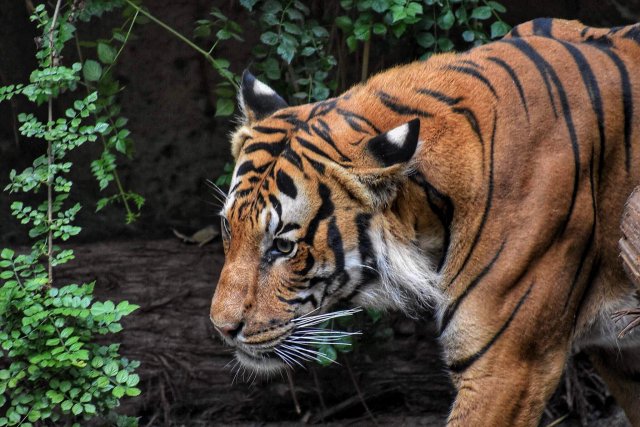From Siberia to Sumatra: : Exploring the Six Unique Types of Tigers
From Siberia to Sumatra: Exploring the Six Unique Types of Tigers
Tigers are majestic creatures that have captured the imagination of people around the world. With their striking appearance and powerful presence, they are often seen as the kings of the jungle. However, what many people may not realize is that there are actually six unique types of tigers, each with its own distinct characteristics and habitat. In this article, we will explore these six types of tigers and delve into what makes each one special.
Siberian Tigers: The Giants of the North
The Siberian tiger, also known as the Amur tiger, is the largest subspecies of tiger in the world. These magnificent creatures can weigh up to 660 pounds and measure up to 10 feet in length. They are found primarily in the forests of eastern Russia, where they have adapted to the harsh climate.
Despite their size, Siberian tigers are excellent swimmers and are known to cross large rivers in search of prey. They primarily feed on deer and wild boar, but have been known to take down larger animals such as bears and even young moose. Unfortunately, due to habitat loss and poaching, Siberian tigers are critically endangered, with only around 500 individuals left in the wild.
Bengal Tigers: The Royal Bengal Beauties
The Bengal tiger is perhaps the most well-known and iconic of all tiger subspecies. Found primarily in India and Bangladesh, these tigers are known for their beautiful orange coats with black stripes. They are also known for their strength and agility, making them formidable hunters.
Bengal tigers are highly adaptable and can thrive in a variety of habitats, from dense forests to grasslands. They primarily feed on deer, wild boar, and buffalo, but have been known to take down larger prey such as elephants and rhinos. However, like the Siberian tiger, the Bengal tiger is also endangered, with only around 2,500 individuals left in the wild.
Indochinese Tigers: The Elusive Hunters
The Indochinese tiger is found primarily in Southeast Asia, including countries such as Thailand, Cambodia, and Vietnam. These tigers are known for their dark orange coats and narrow black stripes. They are slightly smaller than their Bengal counterparts, but are still formidable predators.
Indochinese tigers are highly elusive and prefer to live in dense forests and grasslands. They are excellent climbers and swimmers, allowing them to navigate their varied habitats with ease. Unfortunately, due to habitat loss and poaching, the Indochinese tiger is critically endangered, with only around 350 individuals left in the wild.
Malayan Tigers: The Guardians of the Rainforest
The Malayan tiger is found exclusively in the southern part of the Malay Peninsula. These tigers are known for their dark orange coats and bold black stripes. They are slightly smaller than their Indochinese counterparts, but are still powerful predators.
Malayan tigers are highly adapted to their rainforest habitat and are excellent climbers. They primarily feed on deer and wild boar, but have been known to take down smaller prey such as monkeys and birds. Unfortunately, due to habitat loss and poaching, the Malayan tiger is critically endangered, with only around 200 individuals left in the wild.
South China Tigers: The Forgotten Tigers
The South China tiger is one of the most critically endangered tiger subspecies, with no confirmed sightings in the wild for over 25 years. These tigers were once found throughout southern China, but are now believed to be functionally extinct in the wild.
South China tigers are known for their distinctive dark orange coats and broad black stripes. They are slightly smaller than other tiger subspecies, but are still powerful predators. Efforts are currently underway to reintroduce captive-bred South China tigers into the wild in an attempt to save this subspecies from extinction.
Sumatran Tigers: The Last of the Indonesian Tigers
The Sumatran tiger is found exclusively on the Indonesian island of Sumatra. These tigers are the smallest of all tiger subspecies, but are still formidable predators. They are known for their dark orange coats and closely spaced black stripes.
smallest of all tiger subspecies, but are still formidable predators. They are known for their dark orange coats and closely spaced black stripes.
Sumatran tigers are highly adapted to their forest habitat and are excellent climbers and swimmers. They primarily feed on deer and wild boar, but have been known to take down smaller prey such as monkeys and birds. Unfortunately, due to habitat loss and poaching, the Sumatran tiger is critically endangered, with only around 400 individuals left in the wild.
Summary
Siberia to Sumatra: Tigers are truly remarkable creatures, and each subspecies has its own unique characteristics and habitat. From the giant Siberian tigers of Russia to the elusive Indochinese tigers of Southeast Asia, these majestic animals are a testament to the diversity of our planet’s wildlife. However, all six types of tigers are currently facing significant threats, including habitat loss and poaching. It is crucial that we take action to protect these magnificent creatures and ensure their survival for future generations to admire and appreciate.
Visit Big Cat Rescue, Tampa, FL






